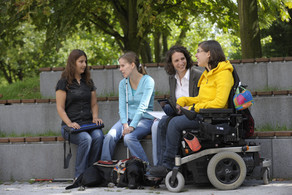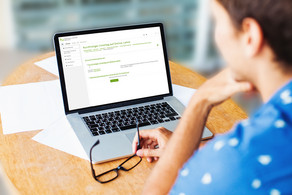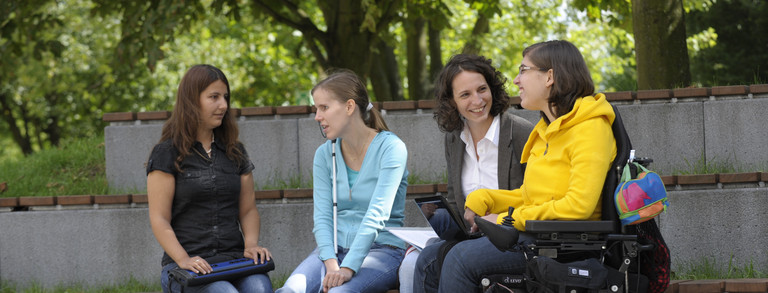The Dortmund Work Approach
Since the 1970s, at the TU Dortmund University effort has been put to improve the situation of students with disabilities. Established with the help of individual students or the collective self-help, various projects were gradually initiated. From those projects, DoBuS and the so-called Dortmund Work Approach emerged.
Over the years, DoBuS has developed and refined the Dortmund work approach; a practice-oriented method and a prototypical way to realize the set goals for inclusive universities. A distinctive feature of that design is that it takes into consideration both the individual situation of students with disabilities and university system as such (Drolshagen, Klein, Rothenberg & Tillmann, 2002). It aims to find solutions beyond individual cases and ensures that, in addition to the development of appropriate precautions, accessible structures are gradually being set up at the TU Dortmund University. The rationale is that these contribute to a reduction of individual needs and individually necessary adjustments in the long term
The work of DoBuS begins with advising and supporting individuals in the realization of their studies. This includes individualized accommodations that enable the respective students to successfully deal with the barriers they encounter. This implies both assistance in compensating for the particular impairment and support in applying for individually helpful reasonable accommodations for disadvantages
In a second step, DoBuS systematically records the occurred needs and individually designed case solutions and analyzes whether the general framework of the university (e.g. study and examination regulations) or structures (e.g. non-accessible buildings or technical infrastructures) have led to discrimination and exclusion. On the one hand, the results of this analysis may reveal a need for action to modify general university structures with regards to the usability for students with disabilities. On the other hand, it may expose the obligation to provide specific help for students or teachers, which are, in close collaboration with the disability mainstreaming or the diversity management, to be implemented permanently in the university structure.





